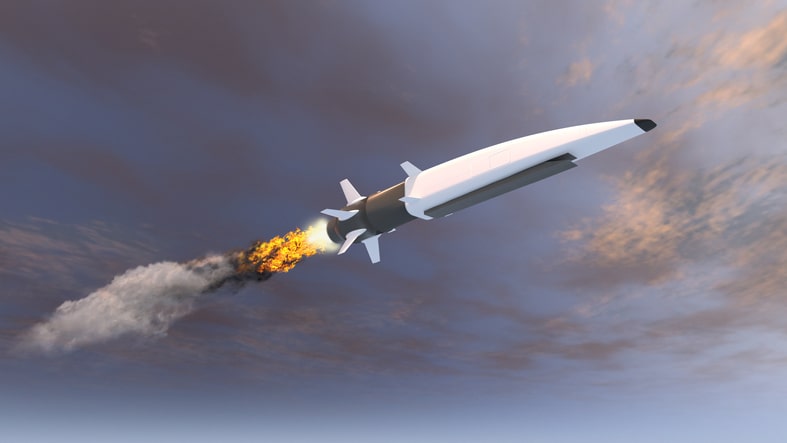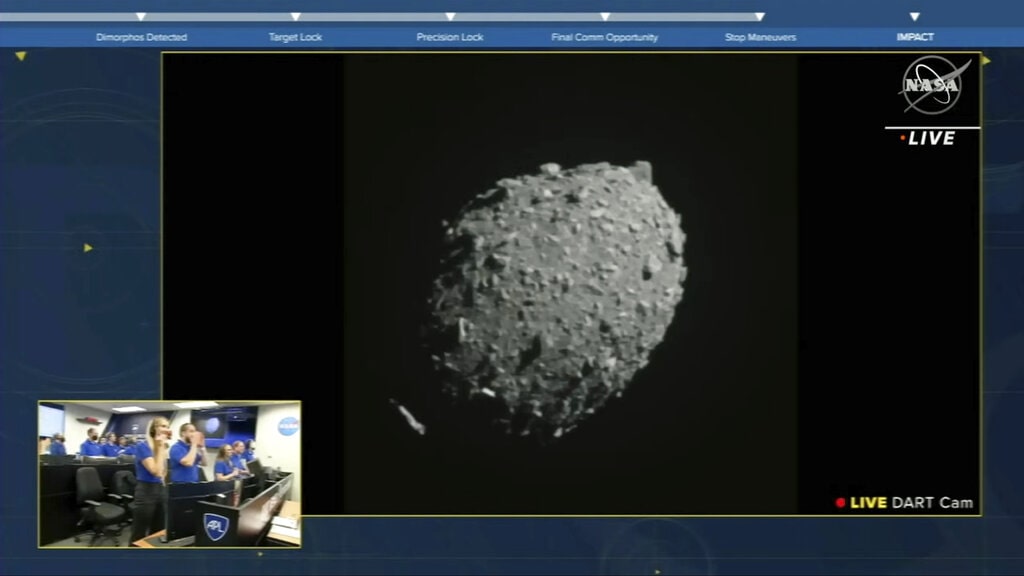September Current Events 2022: Science & Technology News

World News | US News | Disaster News
The world is a very busy place, and it's hard to stay on top of everything. Infoplease has got you covered. Here are the Science & Technology news events you need to know so far for HERE 2022.
- Apple Unveils The iPhone 14 And New Watch Series
- Unmanned Mission Of The New Shepard Failed On Demo Flight Mission
- James Webb Captures The Neptune Rings In A Clear High-Resolution Image
- NASA Successfully Tested The Asteroid Deflection Technology
Apple Unveils The iPhone 14 And New Watch Series

Photo Source: AP Images/Jeff Chiu
Wednesday, September 7, 2022 – Tech giant Apple launched a new line of phones and series of watches at a press event held at its headquarters in California.
At the event, Apple unveiled four new smartphones, three new smartwatches, and Airpod Pro 2.
The new iPhone 14's main camera is 12 megapixels and has larger pixels, a quicker aperture, and better sensors than previous models. For the first time, it employs the usage of an electronic "e-SIM" card rather than a traditional SIM card. Users may now have numerous cellular plans and phone numbers on a single smartphone by storing multiple e-SIMs. Apple announced that the SIM tray would be removed from all iPhone models sold in the United States.
Apple also announced an SOS satellite feature that enables the device to connect to satellite frequencies when no earthly frequency is available; it will help users find emergency help and receive important information promptly.
Besides the phones, Apple launched the series 8 watch, which is water resistant and features an in-built for every clime.
Source: CNN
Unmanned Mission Of The New Shepard Failed On Demo Flight Mission

Photo Source: iStock
Tuesday, September 13, 2022 – The mission of the New Shepard rocket and capsule system, designed by American entrepreneur Jeff Bezos, was cut short over the Texas desert. About one minute after lifting off, the rocket had a motor malfunction. As the cars were climbing at a speed of 700 miles per hour, they were involved in an accident at an altitude of slightly over 28,000 feet (8.5 kilometers).
Since its debut in 2015, this was New Shepard's twenty-third mission and the crewless mission took place on Monday.
Had anyone been on board during the abort, they would have felt a violent shock at the time of separation but would have suffered no ill effects upon touching down. The Federal Aviation Administration, which issues permits for commercial spaceflight in the United States, said it would look into Monday's event.
Sources: BBC
James Webb Captures The Neptune Rings In A Clear High-Resolution Image

Photo Source: AP Images/NASA, ESA, CSA, STScl, and Webb ERO Production Team
Thursday, September 22, 2022 – The newly launched James Webb telescope which replaced the decades-old Hubble space captured convincing images of Neptune rings.
The photo shows the Neptune rings that were last seen when a probe was sent towards the planet in 1989. Apart from the rings, the imagery revealed better details of the dust bands that encircled the planet and it made it possible for scientists to explain the features of the planet’s atmosphere.
In a zoomed-out image, 7 of Neptune’s 14 moons could be seen, the largest and brightest of which is Triton—a star-like heavenly body, which could reflect more than 70% of the sunlight that hits its surface. Neptune is the farthest planet in our solar system, excluding Pluto.
The image of Neptune is only one in the series of imagery that has been gathered by the James Webb. In August, the telescope was able to capture Jupiter and its craters.
Source: BBC
NASA Successfully Tested The Asteroid Deflection Technology

Photo Source: AP Photo/ASI/NASA
Tuesday, September 27, 2022 – In a new planetary defense attempt, NASA crashed a spacecraft into an Asteroid about the size of a football; stadium in order to change its course away from earth.
The mission, called the Double Asteroid Redirection Test (Dart) is the first ever attempt of humankind to redirect the course of a moving planetary body and prevent an imminent doomsday scenario.
The spacecraft collided with the asteroid Dimorphos which was about seven million miles away at the speed of 15,000 mph, 17 meters away from its target—essentially a bullseye.
At the press conference held after the mission, Dart scientists made it known that although the crash mission was a success, it is too early to determine if the primary aim of redirection succeeded. It will be another two months before any confirmation of the change in trajectory is made. They emphasized that Dart is not intending to shatter Dimorphos, but to create a force large enough to change its direction.
Source: The Guardian
Are you intrigued by the latest advances in tech? Check out our Computers, Internet, and Technology page to discover more. And if you enjoyed this article, why not drop a line to let us know, or share it with others who might be interested in Science & Technology events!
About the author







